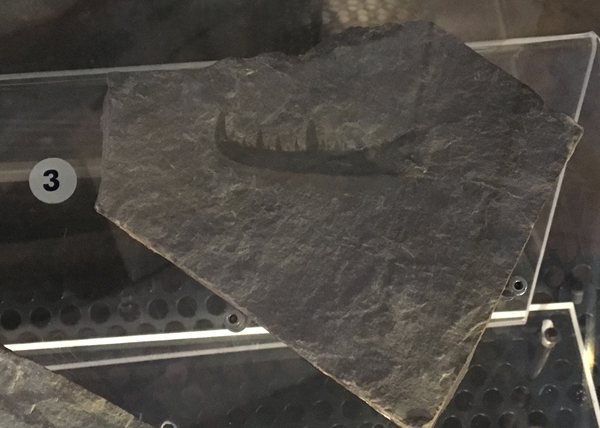Canadian Fisherman Hauls up 300-million-year-old Lobster Claw
We have all heard stories of fishermen who tell of the “one that got away”, tall tales are as much a part of fishing as bait and boats, but for one Canadian fisherman, a remarkable stroke of luck whilst setting pot traps for lobster on the seabed led to the discovery of a 300-million-year-old lobster fossil.
For Canadian fisherman Colin Dandy a routine trip to set traps to catch shell fish and lobster of Cape Breton (Nova Scotia) turned out to be a red letter day for the history of crustacean palaeontology. Last year, Colin was fishing off the east coast of the isle of Cape Breton, close to the small islands known as the Bird Islands, when the fossil containing rock became hooked to the back of his boat’s scallop rack.
For Colin, a fisherman with over 30 years experience, he was able to recognise the strange object as the claw of a lobster but he did not know its age and importance.
Recalling the moment he first saw the rock containing fossil stuck on his scallop rack; Colin stated:
“I picked it up and hosed it off. I saw it was a lobster claw but I didn’t think it was that old.”
Once the fossil had been shown to an expert, at the local natural history museum, the true age and importance of this fossil was determined.
Dr Stuart Critchley, the Curator at the Cape Breton Fossil Centre stated:
“I looked at the fossil. It was surrounded by a thin layer of carbon. It is the same as the carbon we see on our plant fossils here. So as an educated guess, it was formed 300 million years ago, the same time as the Carboniferous era.”
A Stunning Fossil of a Sea Scorpion Claw

A stunning fossil of a sea scorpion (eurypterid) claw housed at the National Museum Cardiff (Wales) photographed in 2019 when team members at Everything Dinosaur visited. Picture credit: Everything Dinosaur.
Picture credit: Everything Dinosaur
Crustaceans such as crabs and lobsters are members of the phylum Arthropoda, the largest phylum of all in the Kingdom Animalia. This phylum consists of insects, spiders, mites and several extinct groups such as the trilobites. The hard outer coating (exoskeleton) of arthropods usually consists of chitin, but it may be further strengthened by calcium carbonate or calcium phosphate, increasing the preservation potential of the hard outer shells of these animals. Some Arthropoda genera are important zonal fossils for palaeontologists, helping to establish the age of different rock strata.
For crustaceans like lobsters, growth occurs during periodic moulting when the exoskeleton is shed and a new larger exoskeleton formed. This means that a lobster may shed its hard outer shell on many occasions during its lifetime. The moulting of the exoskeleton leads to many fossils of cast and shed elements of shell in the fossil record as well as fossils of the dead animals.
It’s not the first time Dandy has seen a fossil like this. He said his father unearthed two similar fossils about 50 years ago. They are now at the Maritime Museum of the Atlantic in Halifax. It is likely that the fisherman are placing their pot traps on a part of the seabed that consists of exposed fossil bearing rock. As pot traps tend to get set in the same area of seabed then the chances of a rigging on a pot bringing up a fossil increase, although the chances of finding a fossil using this method, no matter how fossiliferous the strata, are still remote.
Dandy’s recent find has been donated to the Cape Breton Fossil Centre, he said, so local children will be able to view it.
For models of ancient Palaeozoic creatures: Prehistoric Animal Models and Figures.






Leave A Comment